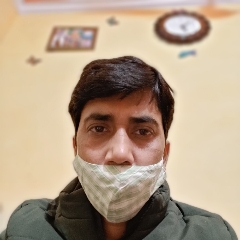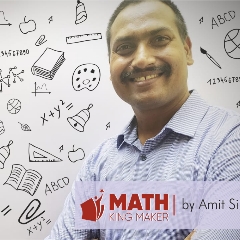Question 1 :
If you live in an overcrowded and poorly ventilated house, it is possible that you may suffer from which of the following diseases?
Question 4 :
Which one of the following has a long term effect on the health of an individual?
Question 6 :
We should not allow mosquitoes to breed in our surroundings because
Question 11 :
<img style='object-fit:contain' src='https://teachmint.storage.googleapis.com/question_assets/cbse_ncert/61b1d2b2f59b460d7261f60c.JPG' />
Find out the valency of atoms represented by the figure.
Question 12 :
<img style='object-fit:contain' src='https://teachmint.storage.googleapis.com/question_assets/cbse_ncert/61b1d2b2f59b460d7261f60c.JPG' />
Find out the valency of atoms represented by the figure.
Question 13 :
The ratio of the radii of hydrogen atom and its nucleus is ~ $10^{5}$. Assuming the atom and the nucleus to be spherical and if atom is represented by planet earth $‘R’=6.4\times 10^{8}m$ , estimate the size of the nucleus.
Question 14 :
One electron is present in the outer most shell of the atom of an element X. What would be the value of charge on the ion formed if this electron is removed from the outermost shell ?
Question 15 :
Which of the following scientist identified the 'Neutron' in the structure of an atom ?
Question 16 :
The number of electrons in an element X is 15 and the number of neutrons is 16. Which of the following is the correct representation of the element?
Question 18 :
Which of the following scientist identified the 'Canal rays' in the structure of an atom ?
Question 19 :
Rutherford’s α-particle scattering experiment led to the discovery of the ____________.
Question 20 :
In response to a question, a student stated that in an atom, the number of protons is greater than the number of neutrons, which in turn is greater than the number of electrons. Do you agree with the statement ? (Yes/No)
Question 21 :
Which postulate of Dalton’s atomic theory is a result of the law of conservation of mass?
Question 22 :
When 3.0 g of carbon is burnt in 8.0 g of oxygen, 11.00 g of carbon dioxide is produced. What mass of carbon dioxide will be formed when 3.00 g of carbon is burnt in 50.0 g of oxygen?
Question 28 :
Which of the following correctly represents 360 g of water? (i) 2 moles of $H_2O$ (ii) 20 moles of water (iii) $6.022\times 10^{23}$ molecules of water (iv) $1.2044\times 10^{25}$ molecules of water
Question 31 :
The power of a motor pump is 2 kW. How much water per minute the pump can raise to a height of 10 m? (Given, $g = 10 ms^{-2}$ )
Question 32 :
A body is falling from a height h. After it has fallen a height $\frac{h}{2}$ , it will possess
Question 33 :
A lamp consumes 1000 J of electrical energy in 10 s. What is its power?
Question 34 :
A light and a heavy object have the same momentum. Find out the ratio of their kinetic energies. Which one has a larger kinetic energy?
Question 35 :
Calculate the work required to be done to stop a car of 1500 kg moving at a velocity of 60 km/h?
Question 36 :
The kinetic energy possessed by an object of mass, m and moving with a uniform velocity, v is _______.
Question 37 :
The energy used in one hour at the rate of 1kW is called 1 kW h.
Question 38 :
Avinash can run with a speed of $8 ms^{-1}$ against the frictional force of 10 N, and Kapil can move with a speed of $3 ms^{–1}$ against the frictional force of 25 N. Who is more powerful and why?
Question 39 :
A boy of mass 50 kg runs up a staircase of 45 steps in 9 s. If the height of each step is 15 cm, find his power. Take g = 10 m $s^{-2}$.
Question 40 :
What are the two conditions that are really essential for a work to be done?
Question 41 :
An isotope of iodine is used in the treatment of goitre. TRUE OR FALSE?
Question 42 :
A neutron is formed by an electron and a proton combining together. Therefore, it is neutral.
Question 44 :
Atoms of the same element, having the same atomic number but different mass numbers are called?
Question 47 :
If mass number is 1, number of neutrons is 0, number of protons is 1 and number of electrons is 1 then find name of atomic species.
Question 48 :
Atomic number is defined as the total number of _______ present in the nucleus of an atom.
Question 49 :
On the basis of Rutherford’s model of an atom, which subatomic particle is present in the nucleus of an atom?
Question 50 :
If atomic number is 16, mass number is 32 and name of atomic species is Sulphur then find number of electrons.
Question 52 :
What are the two conditions essential for being free of disease?
Question 54 :
Why are we normally advised to take bland and nourishing food when we are sick?
Question 56 :
A baby is not able to tell her/his caretakers that she/he is sick. What would help us to find out that the baby is sick?
Question 57 :
A baby is not able to tell her/his caretakers that she/he is sick. What would help us to find out what is the sickness?
Question 58 :
If you get jaundice, do you think the long-term effects on your health are likely to be most unpleasant?
Question 59 :
If you get lice, do you think the long-term effects on your health are likely to be most unpleasant?
Question 60 :
For vector-borne infections, we can prevent exposure by providing living conditions that are not overcrowded. TRUE or FALSE?



























